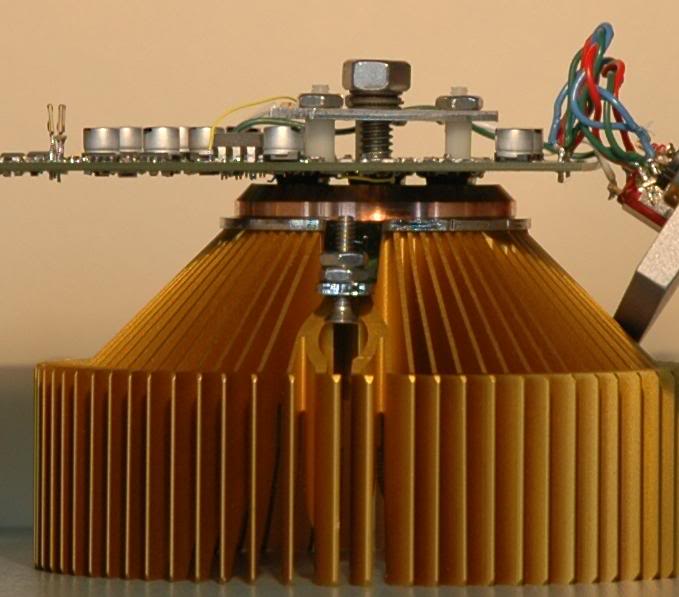Hi All,
Has anyone here designed class A/B amplifiers using only SMT parts in the power stage? The main application being active band pass limited operation – for upper midrange and tweeters.
My main concerns are of cause thermal management, but since new PCB technologies, with good thermal properties, are emerging for the LED market (Alu cores e.g.) new possibilities may present themselves.
I have something working electrically with standard four layer PCB technology, but this does not fulfill the thermal requirements – so I am wondering if anyone has experience with alternative PCB technologies.
Thanks
\\\Jens
Has anyone here designed class A/B amplifiers using only SMT parts in the power stage? The main application being active band pass limited operation – for upper midrange and tweeters.
My main concerns are of cause thermal management, but since new PCB technologies, with good thermal properties, are emerging for the LED market (Alu cores e.g.) new possibilities may present themselves.
I have something working electrically with standard four layer PCB technology, but this does not fulfill the thermal requirements – so I am wondering if anyone has experience with alternative PCB technologies.
Thanks
\\\Jens
Member
Joined 2009
Paid Member
you really don't want long, skinny thermal path even in Cu, heat pipes can let you move heat from a small area pretty efficiently though - see all the cpu coolers
I used a solid metal heat sink, mounted pwr pad smt op amps "belly up" when I wanted to remove 30 W from a smt amplifier board:
http://www.diyaudio.com/forums/chip...-power-amp-thoughts-anyone-2.html#post2318811

another new smt op amp with a little more V and I ADA4870 datasheet and product info | High Speed, High Voltage, 1 A Output Drive Amplifier | High Output Current Amplifiers | Analog Devices
I used a solid metal heat sink, mounted pwr pad smt op amps "belly up" when I wanted to remove 30 W from a smt amplifier board:
http://www.diyaudio.com/forums/chip...-power-amp-thoughts-anyone-2.html#post2318811

another new smt op amp with a little more V and I ADA4870 datasheet and product info | High Speed, High Voltage, 1 A Output Drive Amplifier | High Output Current Amplifiers | Analog Devices
With modern military highish power SM pcbs, the power devices are on the underside and the board is bolted to a heatsink using a gloopy heat conducting 2-part compound as a filler that sets fairly firm (cheese sort of consistency) an hour or two after mixing.
Thanks for the info. Do you know what brand I should look for regarding thermal glue?
WBR
Jens
The stuff I'm talking about isn't cheap, I think it's this one, I can't be sure as I don't use it but I do see it 'in action' occasionally, if not it's similar.........
Emerson and Cuming STYCAST 5954 Thermally Conductive Encapsulant Part A Red 1 gal Pail
It's often used liberally to fill the entire space under the pcb, the advantage being it copes with all the different component heights as it still conducts heat very well with a few mm between a component and the heatsink. It also isn't messy after setting and the board will peel off the set compound which can also be peeled off fairly cleanly.
It's a lot cheaper to use the usual grease though but then you have to get all heat producing components much flatter onto the heatsink for it to work efficiently.
Emerson and Cuming STYCAST 5954 Thermally Conductive Encapsulant Part A Red 1 gal Pail
It's often used liberally to fill the entire space under the pcb, the advantage being it copes with all the different component heights as it still conducts heat very well with a few mm between a component and the heatsink. It also isn't messy after setting and the board will peel off the set compound which can also be peeled off fairly cleanly.
It's a lot cheaper to use the usual grease though but then you have to get all heat producing components much flatter onto the heatsink for it to work efficiently.
- Status
- This old topic is closed. If you want to reopen this topic, contact a moderator using the "Report Post" button.